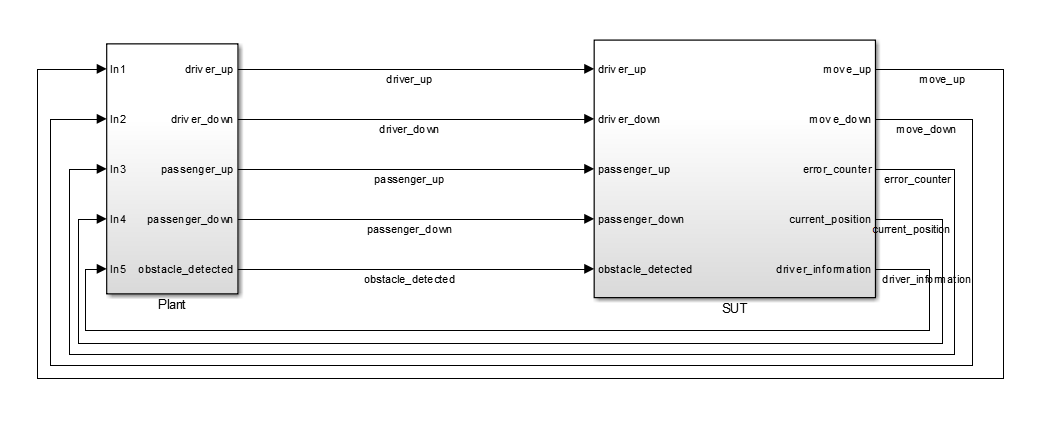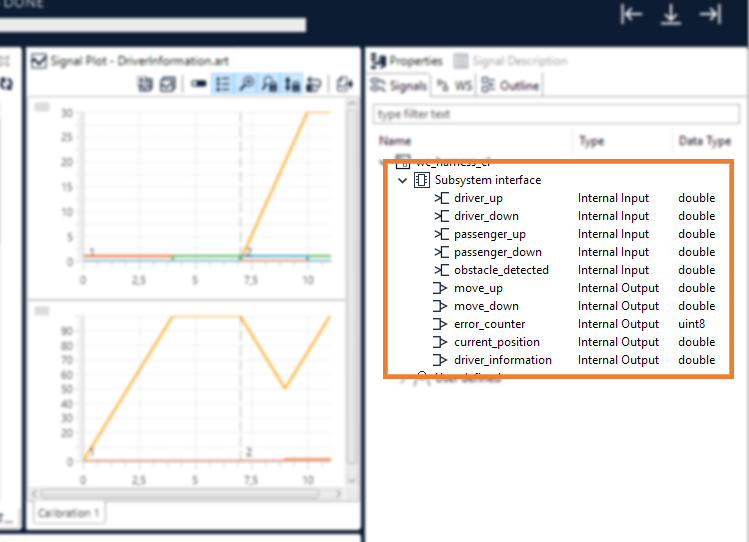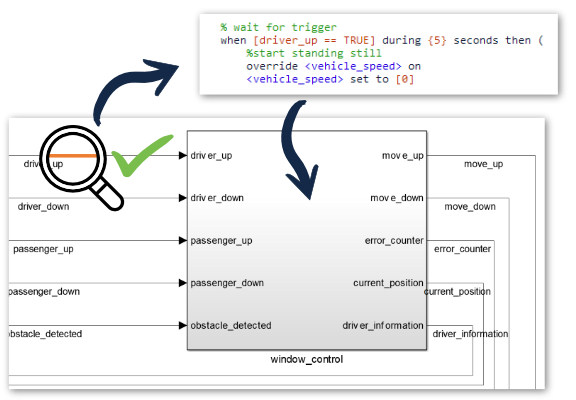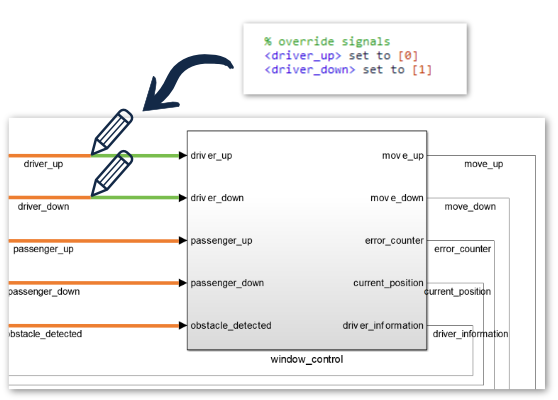
Closed-loop testing refers to tests, where the outputs of the system under test (SUT) are used as inputs to a plant and the outputs of the plant are used as inputs to the SUT, forming a closed control loop. If you have models of your plant, which describe environmental behaviour to your SUT, you can use Arttest to test your SUT in closed-loop applications. Compared to open-loop tests, closed-loop tests on model level enable you easy tests of the interaction of the SUT with its environment even before hardware setups are available.


After model analysis, the interface of the selected SUT is made available for convenient direct stimulation and capturing in Arttest.
Besides the observation and evaluation of the signals in the control loop, you can use Arttest to perform evaluations on arbitrary signals of the plant model or the SUT to test for desired behaviour. You can use Arttest to automatically switch between different parametrizations and calibrations of the SUT or the plant model between test executions to alter and evaluate the behaviour in multiple configurations and scenarios.

When testing closed-loop applications you can specify events and react to these e.g. by changing evaluations or stimuli for signals. Hence, it is possible to create tests without knowledge of the concrete timing behaviour of the plant.

If the plant model does not (yet) include all parametrizations or scenarios required for testing, Arttest helps you with the possibility to drive the plant and the SUT to the required states by injection of specified signal data. Thus, it is possible to test scenarios which are not covered by the plant model without modification or adaption of the model.